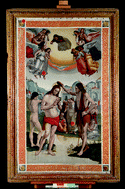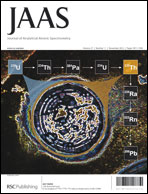Discoloration of the smalt pigment: experimental studies and ab initio calculations†
Abstract
Smalt is a blue pigment used by many European artists in mural and easel paintings, mainly in the period from the XV to XVIII century. It is a potassium glass where cobalt is added to the glassy matrix to get the blue hue. The pigment deteriorates with age, changing its colour from an intense blue to a grey-yellowish hue, causing severe problems in the conservation of the paintings. In this study a set of specimens of smalt dispersed in linseed oil was prepared and artificially aged to simulate the progressive deterioration of the pigment in a painting on canvas. The artificially aged smalt specimens were compared with some samples of naturally aged smalt taken from a banner painted at the end of XV century by Luca Signorelli, the “Baptism of Jesus”. A multi-technique approach, including


 Please wait while we load your content...
Please wait while we load your content...